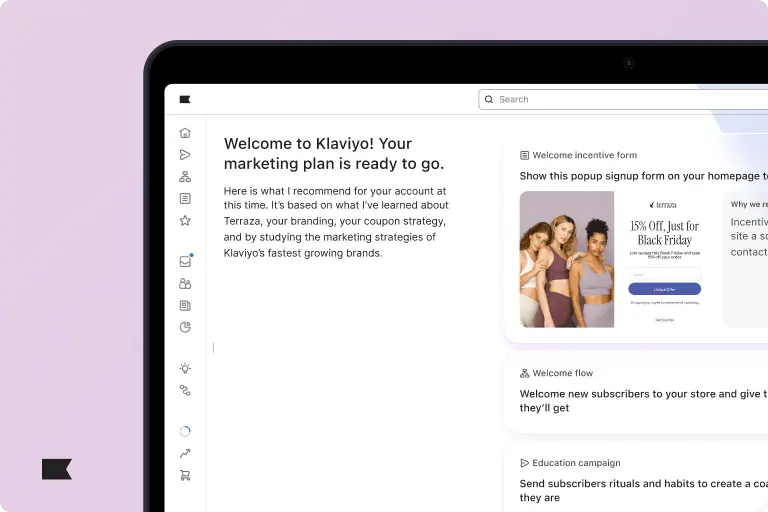Nightmare customer scenarios with AI
Beep bop, beep bop. How can I help you today?
This could be the future. Or it might not be. Movies like The Terminator have planted the idea that AI will one day wake up fully self-aware, decide humanity is a threat, and wage a robot war to wipe us all out.
But in reality, AI is more likely to become our smart sidekick than our sinister overlord.
Think about it this way: we’ve been integrating new technologies into our lives for centuries and, each time we do, a crowd of naysayers claim the apocalypse is nigh. Even the printing press wasn’t safe. Doom mongers believed it would make monks obsolete and lead to the downfall of civilisation. But really it just helped us print books faster.
AI is just the next evolution.
Rather than fearing something we’re ultimately in control of, we should embrace it as a way to complement our existing talents (and make our lives easier).
Want to crunch through billions of data points? AI can do that in a flash. Need a virtual assistant to handle mundane tasks? AI’s got your back. Looking to gain insights from massive textual datasets? AI can parse through it all with speed and precision.
But there’s sometimes too much of a good thing. Or there’s that other saying: “If it’s too good to be true, it usually is”. If you lean on AI for every little thing—like outsourcing the entire customer experience—it can have the opposite effect.
Here are some examples of how brands can undo customer goodwill through AI-shaped errors.
When bots lie
When Jake Moffatt asked Air Canada’s AI-powered chatbot if he could get a bereavement discount on a flight, the bot said “sure” and told him a refund was possible up to 90 days after purchase.
Except, it was a lie. The bot had completely made up this rule.
That’s bad enough, right?
But Air Canada doubled down. Rather than admitting fault, the airline claimed the chatbot was “responsible for its own actions”, a flimsy defense that led to public mockery.
The main lesson here is this: chatbots sometimes make things up and those things can harm your business.
The secondary lesson is: to train your chatbot and not treat it like a sentient being.
Here’s another example of a chatbot doing a brand dirty. Chevrolet’s chatbot sold a car for $1 simply because the customer asked.
Oh, the humanity
Robots are great for crunching data and hashing out complex problems in seconds, but trying to have a heart-to-heart with them is as emotionally fulfilling as confiding your deepest fears to a calculator.
AI has very little (read: no) emotional intelligence. It doesn’t understand the nuances of humanity because it has no feelings. It can’t relate.
Relying too heavily on AI without incorporating human judgement can lead to decisions and interactions that lack context or EQ. Which, ultimately, can be hugely detrimental to your brand image.
Trust plays a major factor in whether shoppers choose to buy from you and showing you don’t care (or, more accurately, having a robot really not care) will lose that trust in seconds.
Fix the fail:
When you let AI do all the talking, customer interactions can feel robotic and impersonal. If in doubt, always have an option for customers to speak to a real person. It’s frustrating going around in circles and not getting the answers you want, so add a direct line to your real-person customer service team for shoppers who want to speak to a human.
Skincare brand Ballsy redirects shoppers to a human after taking a few details from them.
Poor integration leads to poor experiences
AI is just one small piece of a much bigger puzzle. Not integrating it with your existing ecommerce platforms can lead to siloes and inefficiencies.
The other thing to consider is how you use the information AI collects. It’s all well and good gathering data points, but if you’re not using those insights to fuel your marketing and sales campaigns, is there really any point?
The great thing about using AI in a customer service environment is you can unlock lots of qualitative data. You can find out commonly asked questions, hesitations, size and colour preferences, and other details that are invaluable for better understanding who your customers are and what they want.
Fix the fail:
Consider how AI findings can be used across different functions, like marketing, sales, and customer service for a holistic approach. For example, if you find there’s a common hesitation, you can use this information to create marketing campaigns that plug whatever is causing that bump in the buying experience.
Floyd Home has packaged up its FAQs on each product page and it wastes no time telling new shoppers where they can find this information.
Not segmenting and same-y encounters
The thing about robots is they all sound the same—if not the same, then very similar. They have a distinct language pattern you can usually spot a mile off. The problem is, that this can lead to generic interactions that make your brand sound a bit… meh. And, when most ecommerce brands are competing with 123,430 others (number not completely accurate), you must make an effort to stand out.
While there’s not much you can do about the robotic language patterns (bots will be bots), you can customise your AI apps for different customer segments. Our 2024 AI Trends Report found that 33% of respondents considered increased personalisation one of the top benefits of AI.
Fix the fail:
There are plenty of tools that know if a shopper has been on-site before or whether they’ve shown interest in a specific product. When they return, you can use AI to serve relevant product recommendations or send automated email sequences that include relevant information or promos.
In addition, AI can piece together various bits of information about each customer. Say, for example, the same person asked a question on social media, bought a product, and responded to a couple of emails. AI can take this information and start compiling a more detailed picture of this person and what they might want from your brand.
For example, with Klaviyo Segments AI ,you can simply describe the customers you want to reach and AI will create a segment for your next product launch or cross-sell campaign.
Neglecting data privacy is a big no-no
Customers really value their data privacy. This is a problem when it comes to AI. After all, what do the bots do with the information they collect? Will they share it with the next customer? Who’s keeping track of the information customers have shared?
Are we really leaving sensitive information like this in the hands of robots with zero emotional intelligence or care for your business?
Remember when ChatGPT first came out and it was openly sharing confidential company information and data? Imagine if that was your business and how quickly you’d lose customer trust and respect. Not to mention the legal issues.
Fix the fail:
Make sure your AI tools adhere to your data privacy guidelines and they stick to local and national laws. If in doubt, be overly cautious. Let customers know what their data will and won’t be used for, how it’s processed, and what happens to it after they’ve had an AI encounter.
Cost mismanagement mayhem
There’s plenty of free AI. ChatGPT is a prime example of a free tool—great if you want to test the waters without spending anything, but not so great if you want an AI partner that understands your business, customers, and data policies.
Many brands underestimate the cost of implementing AI, including the initial and ongoing costs of maintaining the infrastructure, running maintenance, and training it.
As a result, you can end up pumping resources into AI initiatives that just aren’t getting decent (or any) results—the last thing you need in such a tough economic climate where everyone is tightening budgets.
Fix the fail:
Treating AI like a cheap employee working for peanuts will almost certainly lead to bloated costs (and probably a fair amount of damage control). Do your due diligence—carefully map expenses for data collection, model training, implementation, and ongoing maintenance against your return on investment (ROI). Compare those costs to the time saved and the resources you free up in the process.
Finally, consider your main priority—maximising customer lifetime value? Increasing retention rate? When you know what you want to achieve, focus your AI efforts there rather than frivolously chasing every algorithm fad.
AI is not the antithesis…
But it’s also not the cure all.
It’s all about finding a happy balance between saving time and money and delivering an exceptional, trustworthy customer experience.
AI can be an incredibly powerful tool, but only if it’s implemented thoughtfully. Like any advanced technology (we can probably discount the printing press at this stage), it requires strategic planning, prudent investment, and careful integration to truly reap the rewards.
Treat AI as an extension of your customer experience team rather than a replacement for those lovely, warm human connections your customers crave. Train it diligently (please!), protect customer data like your life depends on it (because your business definitely does), and always offer a way for customers to speak to a real human.
When you strike this balance, AI becomes a great co-pilot. It boosts efficiency, personalises experiences, and meets customers where they are in the moment.
Mishandle it though (Air Canada, we’re firmly looking at you), and you might find yourself crashing and burning in an apocalyptic customer service meltdown.

Related content

Learn how to use K:AI Marketing Agent to plan, launch, and optimize your BFCM campaigns faster—boosting efficiency, personalization, and sales this holiday season.

Turn product photos into campaign-ready images in seconds with Klaviyo Remix. Discover 5 AI product photo editing use cases to kickstart your creative marketing strategy.

Streamline your holiday season with time-saving AI features that generate flows and segments, optimise forms, and get campaigns to the right person at the right time.